Betta fish are a popular choice for aquarium enthusiasts because of their vibrant colors, unique personality, and low maintenance. However, it’s important to provide a suitable environment for Betta fish to thrive, and one of the key components of their habitat is live plants. Betta fish plants not only enhance the aesthetic appeal of the aquarium but also provide numerous benefits for the fish’s health and well-being.
In this blog post, we’ll explore the best plants for Betta fish, their benefits, and how to care for them to create a thriving aquatic environment for your Betta fish. Whether you’re a new or experienced Betta owners, this guide will help you understand the importance of Betta fish plants and how to incorporate them into your aquarium.
See also:
- Betta Fish Natural Habitat: Where Do Betta Fish Come From And How Do They Live In Wild Environment?
- Betta Fish Toys – 17 Best Betta Fish Toys For A Joyful Life
- Betta Fish Tank Size: Are You Considering The Best Tank Size For Betta Fish?
Best Betta Fish Plants For Betta Fish Tanks
Let’s go through the upcoming list to see the best live plants for Betta tank.
Anubias Nana
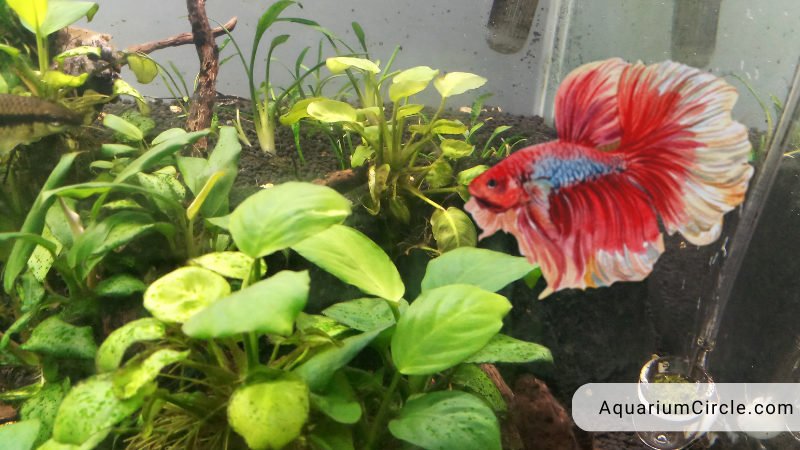
Anubias Nana is a popular choice of plant for Betta fish tanks because of its hardy nature and low maintenance. This plant is native to Africa and is part of the Araceae family. Anubias Nana is a slow-growing plant that can thrive in a wide range of water conditions, making it an ideal choice for beginners.
One of the significant advantages of Anubias Nana is its ability to grow both submerged and emersed, meaning it can survive both in and out of the water. This flexibility allows the plant to grow on rocks, driftwood, or substrate, making it a versatile addition to any Betta aquarium.
Anubias Nana has dark green, leathery leaves that are thick and robust, making it resistant to damage from fish. Additionally, Betta fish love to swim and rest around this plant, making it an ideal hiding spot for them.
Java Fern
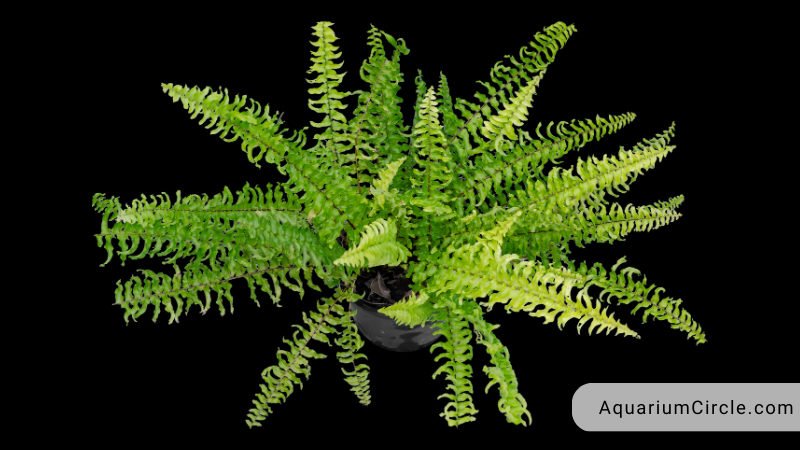
Java Fern is another popular live plant for Betta fish. It is a slow-growing and low maintenance plant that can thrive in a variety of water conditions. Java Fern is native to Southeast Asia and belongs to the Polypodiaceae family.
One of the unique features of Java Fern is its ability to grow both in and out of water. It can attach itself to rocks, driftwood, and other aquarium decorations, making it an excellent addition to any Betta fish tank. This plant has long, thin, and slightly curved leaves that can grow up to 13 inches in length.
Java Fern is an excellent choice for Betta fish tanks as it provides a natural environment for the fish to explore and hide. The plant’s leaves offer a perfect spot for Betta fish to rest and lay their eggs, making it a popular choice for breeding Betta fish.
Java Moss
Java Moss is a highly versatile and unique aquarium plant that has become a popular choice among planted tank enthusiasts. With its deep green hue and thin fronds, it can be used to recreate a variety of styles in a planted tank, making it an ideal choice for enthusiasts of all levels.
In addition to its aesthetic appeal, Java Moss is an excellent addition to any aquarium. Its soft, green fronds provide valuable coverage for fry, creating a safe and natural environment for them to thrive. Additionally, Java Moss can help to create an aged look that enthusiasts of all skill levels enjoy. It can also be used in breeding projects and is perfect for wrapping aquascaping rocks or driftwood, adding an extra layer of visual appeal to your aquarium.
Amazon Sword
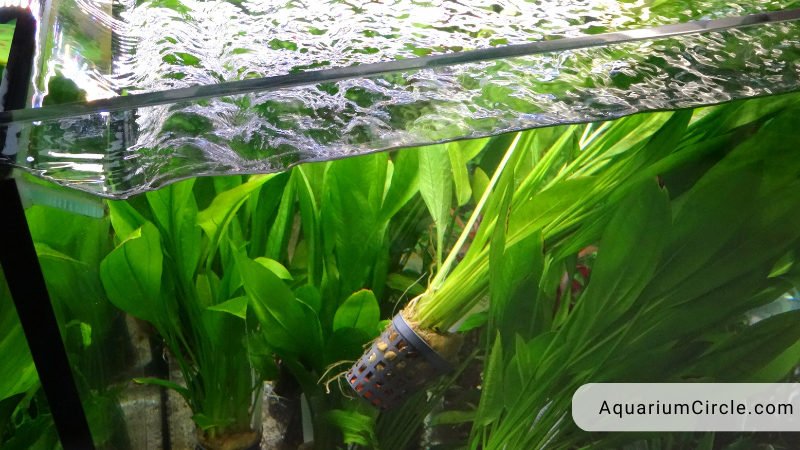
Amazon Sword, also known as Echinodorus Amazonicus, is a popular aquatic plant for Betta fish tanks due to its lush green foliage and the benefits it provides to the aquarium’s ecosystem. This plant is native to South America and belongs to the Alismataceae family.
This Sword plant is a large and robust plant that can grow up to 20 inches in height, making it an excellent background plant for Betta fish tanks. It has long, narrow leaves that are bright green in color and can provide a natural and relaxing environment for Betta fish to swim and hide.
Marimo Moss Ball
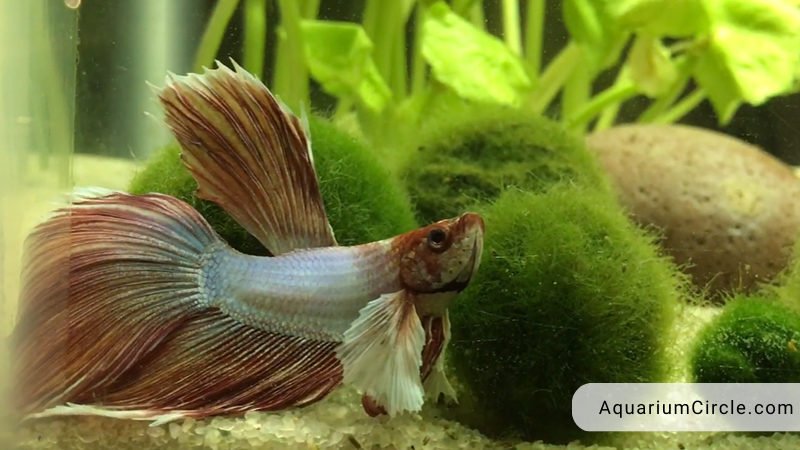
Marimo Moss Ball is a popular plant for Betta fish tanks due to its unique appearance, low maintenance requirements, and the benefits it provides to the aquarium ecosystem. Marimo Moss Ball is a species of algae that is native to Japan and belongs to the Cladophora genus.
Marimo Moss Ball is a ball-shaped plant that can grow up to 2-3 inches in diameter. It has a soft, velvety texture and a bright green color that can add a pop of color to any Betta fish tank. Additionally, Marimo Moss Ball is an excellent choice for Betta fish tanks as it provides a natural environment for the fish to explore and hide.
One of the significant benefits of Marimo Moss Ball is its ability to absorb excess nutrients and waste products in the aquarium water. This plant is known for its high filtration capacity and can remove harmful chemicals such as ammonia, nitrates, and nitrites from the water, making it a vital addition to any Betta fish tank.
In addition to its filtration benefits, Marimo Moss Ball is also a low maintenance plant that requires minimal care. It can thrive in a variety of water conditions and doesn’t require any pruning or trimming.
Water Sprite
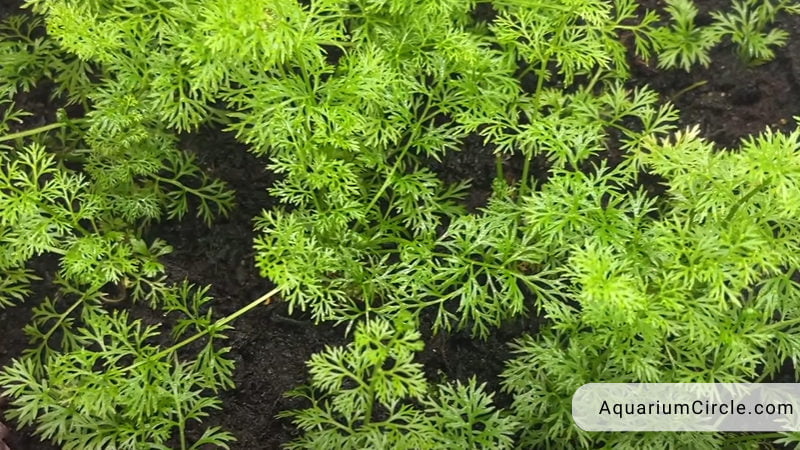
Water Sprite is a popular plant for Betta fish tanks due to its unique appearance, low maintenance requirements, and the benefits it provides to the aquarium ecosystem. Water Sprite is a species of fern that is native to Southeast Asia and belongs to the Ceratopteris genus.
Water Sprite is a fast-growing plant that can reach up to 12 inches in length, making it an excellent background plant for Betta fish tanks. It has long, thin leaves that are bright green in color and can provide a natural and relaxing environment for Betta fish to swim and hide.
Water Sprite is also an excellent choice for Betta fish tanks as it provides a natural environment for the fish to explore and hide. Its long leaves can provide a perfect hiding spot for Betta fish and can help reduce stress levels in the fish.
Vallisneria
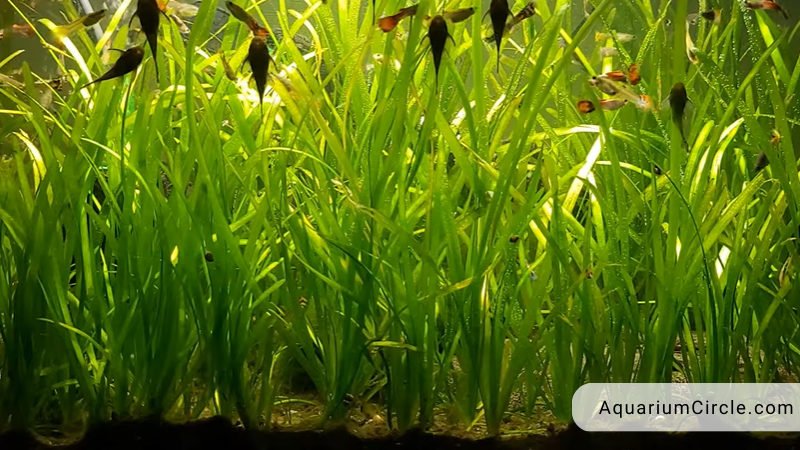
Vallisneria is a thin-leaved, tall plant that can create a lush, jungle-like appearance in your Betta fish tank. This fast-growing plant anchors deeply into the substrate and thrives on nutrients, making it an ideal choice for any aquarium setup.
However, one of the challenges with this plant in a Betta fish tank is that it prefers a strong water current. Fortunately, the tall nature of the plant can actually provide a buffer for the water flow, creating a suitable environment for both the plant and the fish to thrive. As a result, Vallisneria can be an excellent addition to your Betta fish tank, adding both visual appeal and beneficial filtration.
Anacharis
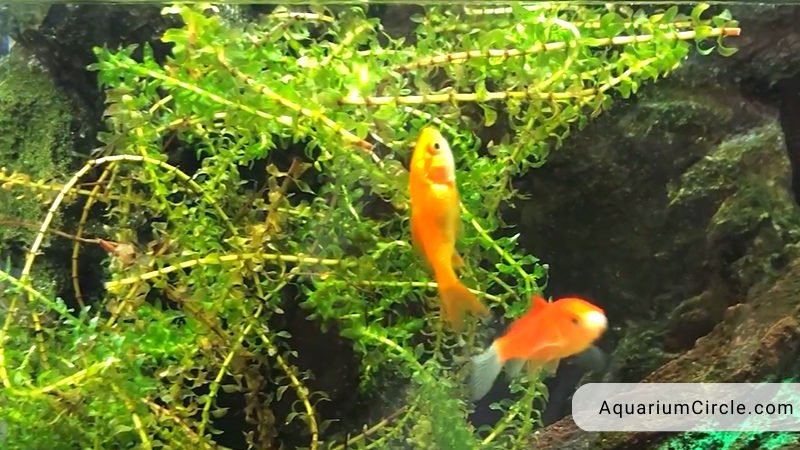
Anacharis is an excellent choice of aquarium plant for beginners, as it is effortless to maintain. This plant can be left floating or anchored to a spot in the tank as it doesn’t have any roots or foot structure.
Furthermore, Anacharis doesn’t need any specialized fertilizers or soils and can thrive in low light conditions. It also propagates easily by picking off a chute and is best planted in groups to achieve the desired visual effect.
In addition to its aesthetic benefits, Anacharis offers several secret weapons that can help maintain a healthy Betta fish tank. This plant secretes a chemical that can prevent the buildup of glue-green algae, thereby keeping the tank clean and clear. Additionally, Anacharis removes ammonia from the water and aids in oxygenating the tank water. Both of these benefits are crucial for the health and well-being of Betta fish. Finally, Anacharis provides plenty of dense cover for Betta fish to hide among, making it an ideal addition to a Betta fish tank.
Cryptocoryne Wendtii
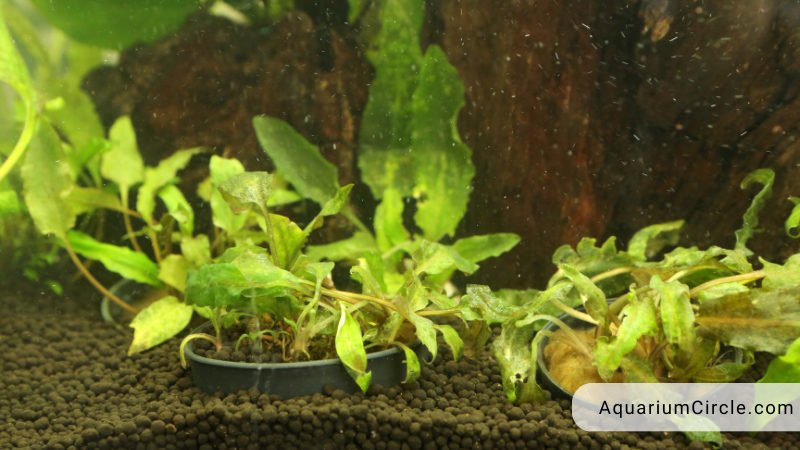
Cryptocoryne Wendtii is a rooted plant that works well in Betta fish tanks and is an excellent option for beginners. This plant is easy to grow and has a moderate growth rate. It can be grown both submerged and emersed, and propagation is easy by cutting off new plantlets growing from the mother rhizome.
One of the significant benefits of Cryptocoryne Wendtii is its adaptability to a variety of lighting conditions. This plant can thrive in both high and low light environments, making it an ideal choice for Betta fish tanks with varying lighting needs.
If you’re looking for a rooted plant for your Betta fish tank, Cryptocoryne Wendtii is one of the best-suited options. With its easy maintenance, adaptability, and moderate growth rate, this plant can provide a natural and aesthetically pleasing environment for your Betta fish to thrive.
Banana Plant
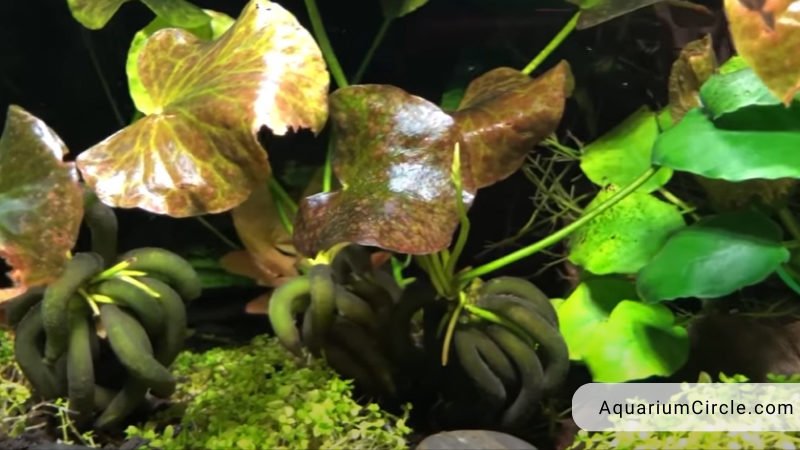
The Banana plant is an intriguing addition to any Betta fish tank, with a unique appearance that sets it apart from other species of plants. Unlike other plants that have a typical appearance, the Banana plant features green banana-like roots that extend and bend downwards from the stem, almost resembling little legs on an alien creature.
From the base of the stem, the thin stem travels upwards to a small, wide leaf that resembles a lily pad. This means that you can plant a series of Banana plants in your tank while still providing ample room for your Betta fish to swim around comfortably.
The Banana plant is a low-maintenance plant that doesn’t require much effort from you at all. It won’t grow quickly and take over your tank, doesn’t need a lot of light, and is generally quite durable. This makes it an excellent choice for Betta fish tanks, adding both visual interest and the benefits of a live plant without requiring a lot of care.
Bucephalandra
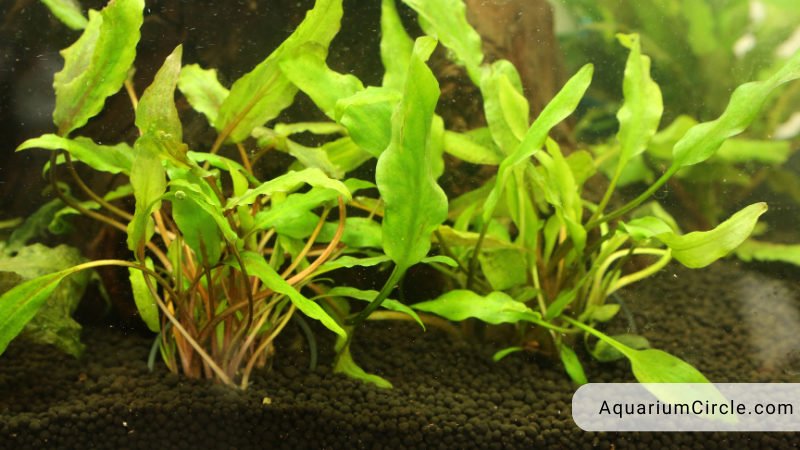
Bucephalandra is an ideal choice for novice aquarists seeking a low-maintenance plant. These unique plants hail from Southeast Asia and are typically found growing in shallow water on rocks and driftwood. With an extensive range of cultivars and varieties available, you’re sure to find the perfect fit for your Betta fish tank. Bucephalandra boasts broad leaves and stunning flowers, making it a surefire way to add visual appeal to your aquarium while keeping your fish happy.
What sets Bucephalandra apart is its slow-growing nature and adaptability – it can be grown submerged or immersed, making it a versatile choice for beginners. You won’t have to worry about it overtaking your tank, as it grows at a leisurely pace and requires minimal maintenance. If you want to propagate it, simply cut the rhizome and attach it to driftwood or rocks using super glue gel or thread. With Bucephalandra, you can add a unique touch to your aquarium with minimal effort.
Hornwort
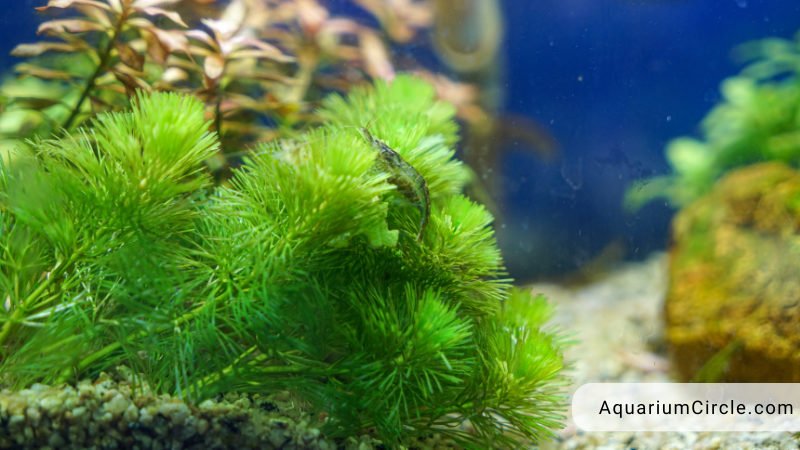
Hornwort is an easy-to-care-for live plant that is an excellent choice for Betta fish owners. This plant has dark green leaves and is known for its ability to oxygenate water and remove ammonia, making it a beneficial addition to any Betta fish tank. However, it can be messy as it sheds its nettles, which can rot and need to be siphoned out, and fertilizer is recommended because it’s excellent at removing nitrates.
The hornwort plant develops fast and provides excellent hiding places for small fry as well as adult Bettas in community tanks. However, because of its speedy growth, it must be watched carefully to avoid a complete takeover of the tank. Hornwort doesn’t have any roots and thrives in low to moderate lighting, making it an ideal choice for Betta fish tanks.
Although Bettas appreciate hornwort, the high amount of upkeep necessary to keep it from taking over makes it best suited for individuals with the time to keep up with its maintenance demands.
Hygrophila
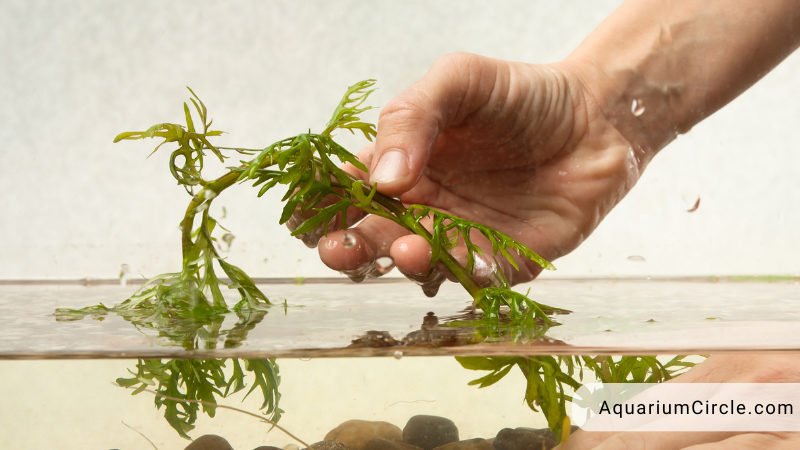
Hygrophila is a easy-maintenance plant that is an amazing addition to Betta fish aquariums. With the potential to grow up to 24 inches tall, this plant’s dense green leaves provide excellent cover for tank equipment. However, like the Hornwort plant, Hygrophila must be monitored and trimmed to avoid overtaking the tank.
To maintain a healthy and vibrant appearance, Hygrophila requires some nutrients, especially iron, which it can receive from Betta waste. This plant does well in low-light conditions and fine substrate, making it an ideal choice for Betta fish tanks. Additionally, it’s easily propagated by trimming off a stem.
One of the most significant benefits of Hygrophila for many Betta fish is that it thrives in conditions where Betta fish also thrive. This means that a healthy plant will most likely result in a pleased Betta fish! In conclusion, Hygrophila is an excellent live plant option for Betta fish tanks, providing both visual appeal and numerous benefits to the aquarium ecosystem.
Wisteria
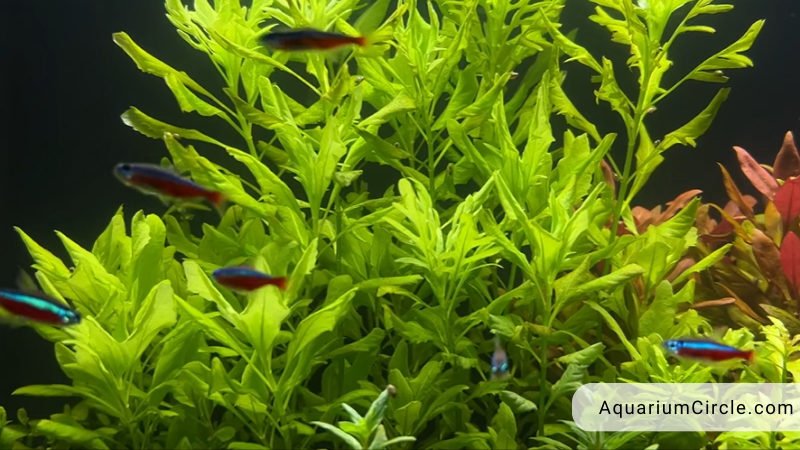
Unique and easy to grow, water wisteria is a great aquarium plant. With a little fertilizer, it can grow well in low light. Depending on the temperature and water conditions, the leaves of Water Wisteria can take on different shapes, adding visual interest to your Betta fish tank.
As a contrast plant, Water Wisteria doesn’t look like most other recommended plants and can provide complexity to your aquarium’s overall aesthetic. This plant can be floated but thrives best when rooted, and Betta fish love hiding amongst its fronds.
Water Wisteria is easily propagated by cuttings, and roots will sprout from exposed nodes. Because of its rapid growth, constant trimming is required as part of routine care.
Amazon Frogbit
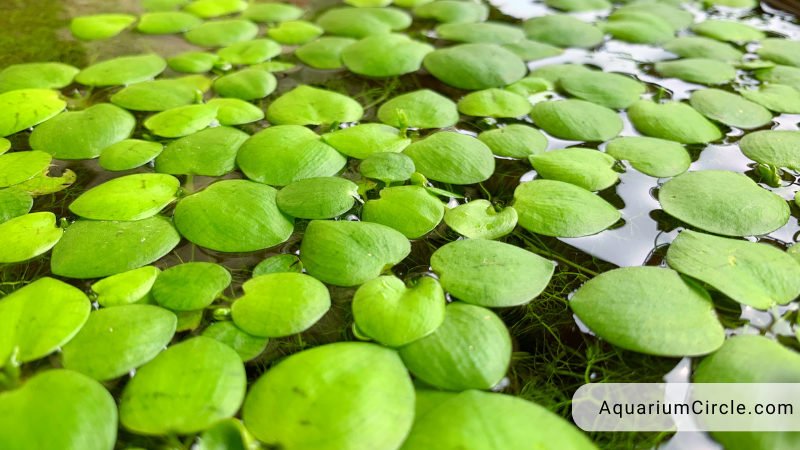
The Amazon Frogbit is an excellent plant for Betta fish, providing shade and cover that makes them feel safe, as well as dense root growth for them to hide among. In addition, it adds diversity and flair to your Betta fish tank, enhancing its overall aesthetic.
If you’re planning to mate and breed Betta fish, the Amazon Frogbit is an excellent choice for protecting bubble nests and fry. This plant grows and multiplies quickly, making it easy to care for but requiring careful monitoring of its propagation.
Duckweed
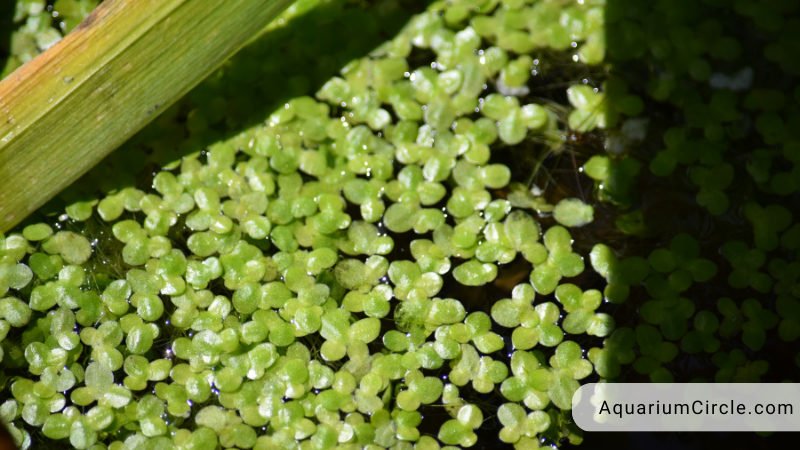
Duckweed is a surface plant that polarizes many planted tank enthusiasts. On the one hand, it can imbue tanks with a natural, swampy ambiance, and it’s effective at absorbing excess nutrients while helping Bettas and other surface-dwelling fish feel less exposed in the water column.
However, Duckweed’s rapid growth rate can pose challenges, as it can be difficult to eradicate once it’s established in a tank. It tends to float and sink with any sort of current, and thoroughly eradicating it requires significant effort. Even a single remaining plant can quickly multiply within days, exacerbating the problem.
Moreover, an overabundance of Duckweed can obstruct light from reaching lower-level plants, inhibiting their growth. While Duckweed can be a unique and beneficial addition to a Betta fish tank, its fast growth rate and propensity to become invasive necessitate careful monitoring and management.
Aponogeton Ulvaceus
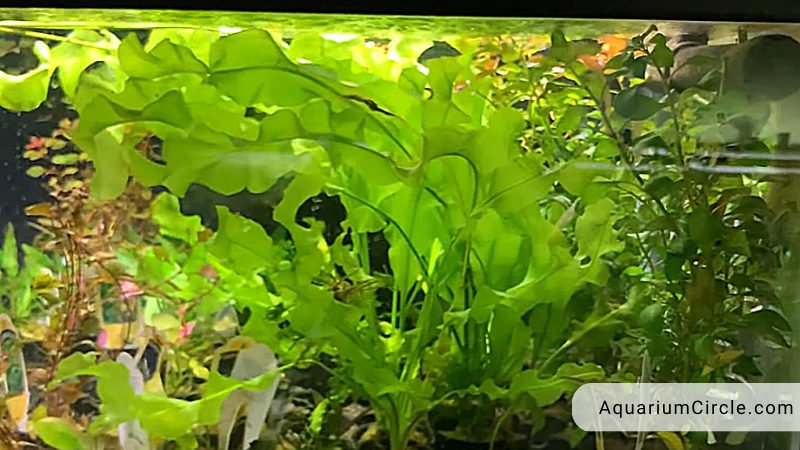
Aponogeton Ulvaceus is an excellent African alternative to Amazon Swords. With delicately twirly, translucent leaves that can grow over a foot in length, this plant adds a unique and attractive touch to any Betta fish tank. Its undemanding nature makes it an ideal show plant for enthusiasts of all levels.
Aponogeton Ulvaceus is available in a variety of colors, leaf forms, and adult sizes. It is typically sold as dried bulbs, making it widely available across the country. New leaves instantly bolt for the surface after being buried in a new tank, allowing you to enjoy seeing your new plant grow and establish itself.
Benefits Of Live Plants For A Betta Fish
Live plants provide numerous benefits for Betta fish, including:
- Oxygenation: Betta fish require oxygen to breathe, just like any other fish. Live plants produce oxygen through photosynthesis, which helps to ensure that the water in the tank is properly oxygenated. This can help to prevent suffocation and promote overall health and well-being for your Betta fish.
- Water filtration: Live plants can help to filter harmful toxins and chemicals from the water in your Betta fish tank. This is because plants absorb carbon dioxide and release oxygen, which can help to balance the pH level of the water. Additionally, plants can absorb harmful chemicals like ammonia, nitrate, and phosphate, which can help to keep the water cleaner and healthier for your Betta fish.
- Natural habitat: Betta fish are naturally found in dense vegetation in the wild, so adding live plants to your tank can help to create a more natural environment for your fish. This can help to reduce stress and promote overall well-being, as well as encourage natural behaviors like exploring and foraging.
- Hiding spots: Betta fish can be shy and easily stressed, so providing hiding spots can help to make them feel more comfortable and secure in their environment. Live plants can provide excellent hiding spots, giving your Betta fish a place to retreat and feel safe when they feel threatened.
- Food source: Some live plants can provide a natural food source for Betta fish. For example, some plants produce small insects or crustaceans that Betta fish can eat. This can help to provide additional nutrition and variety to your Betta fish’s diet.
- Natural behavior: Live plants can stimulate natural behavior in Betta fish, such as exploring and foraging. This can help to prevent boredom and promote overall health and well-being. Additionally, live plants can help to create a more dynamic and interesting environment for your Betta fish, which can help to reduce stress and promote happiness.
Should We Consider Fake Plants For Betta Fish?
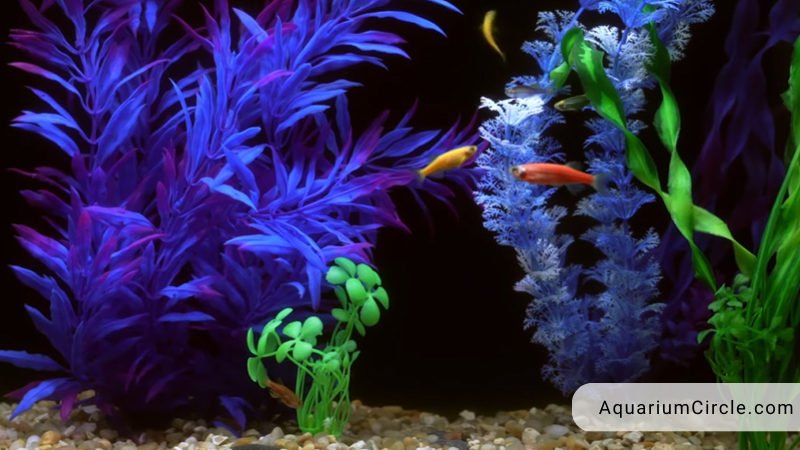
While live plants offer numerous benefits for Betta fish, fake, artificial, or plastic plants can also be a suitable option for some tank setups. Here are some factors to consider when deciding between live and fake plants for your Betta fish:
- Aesthetics: Fake plants can come in a variety of colors and designs, making it easy to find ones that match the aesthetic of your tank. Additionally, fake plants won’t wilt or die, so you can maintain a consistent look in your tank over time.
- Maintenance: Fake plants require very little maintenance, as they don’t need to be trimmed, fertilized, or watered. This can be a good option for busy pet owners or for those who are new to keeping Betta fish.
- Cost: In general, fake plants are less expensive than live plants, particularly in the long run. While you may need to replace them periodically, they won’t require ongoing maintenance or care like live plants do.
- Benefits: While fake plants don’t provide the same benefits as live plants, they can still provide some benefits to your Betta fish. For example, they can provide a place for your fish to rest and hide, which can reduce stress and promote overall well-being.
- Safety: It’s important to choose high-quality fake plants that won’t harm your Betta fish. Some fake plants may have sharp edges or rough surfaces that could injure your fish, and others may leach chemicals into the water that could be harmful. Be sure to choose options that are specifically designed for use in aquariums and that have been tested for safety.
How To Take Care Of Betta Fish Plants?
Taking care of Betta fish plants is an important aspect of maintaining a healthy and thriving aquarium. Here are some tips for caring for your Betta fish plants:
- Provide adequate lighting: Plants need light to grow, so it’s important to ensure your tank has adequate lighting. Be sure to choose a light that’s appropriate for the size of your tank and the needs of your plants.
- Choose the right substrate: Plants need a substrate that can support their roots and provide nutrients. Choose a substrate that’s specifically designed for use with live plants, such as aquatic soil or sand.
- Add fertilizer: Plants need nutrients to grow, so it’s important to add fertilizer to your tank. Choose a fertilizer that’s specifically designed for use in aquariums and that’s safe for Betta fish.
- Trim regularly: To ensure your plants grow properly and don’t take over your tank, it’s important to trim them regularly. This will help to promote healthy growth and prevent your plants from becoming too large or overgrown.
- Monitor water parameters: Plants can help to improve water quality in your tank, but they also require specific water parameters to thrive. Be sure to monitor parameters such as pH, temperature, and water hardness to ensure they’re within the appropriate range for your plants.
- Check for pests: Plants can sometimes attract pests such as snails or algae. Check your plants regularly for signs of pests and take steps to address any issues that arise.
By following these tips and regularly caring for your Betta fish plants, you can help to ensure a healthy and thriving aquarium for your fish.
See also: Do Betta Fish Like Light? Your Answer Is Right In This Post!
Video About Betta Fish Plants
FAQs
Why are plants important for Betta fish?
Plants provide a natural habitat for Betta fish, oxygenate the water, reduce stress, and filter the water.
How do I care for Betta fish plants?
Betta fish plants require appropriate lighting, fertilization, temperature, and placement to thrive.
Can Betta fish live without plants?
Yes, Betta fish can live without plants. However, plants offer several benefits to Betta fish and can enhance their overall health and well-being.
Can any plants harm Betta fish?
Yes, some plants can harm Betta fish. For instance, plants with sharp edges or thorns can damage their delicate fins. It’s essential to research and choose plants that are safe for Betta fish.
Do Betta fish eat plants?
Betta fish may nibble on plants, but they primarily feed on pellets or flakes. Providing a well-balanced diet for Betta fish is crucial to their health and growth.
References

Annette M. Chaney is an experienced marine biologist with over 20 years of experience as an aquarist and fishkeeper. She started her first aquarium at a young age, filling it with frogs and goldfish obtained from the ten-cent pet store.
Annette grew up caring for and breeding African Cichlids, which led to a hobby in high school that doubled as a profitable means. Attending Reed College gave her time to solidify herself as an accomplished aquarium caretaker with an eye for sales. After that, from 2009 – 2013, she studied at Roger Williams University – one of the most prestigious universities for Aquaculture and Aquarium in USA. She is the founder of AquariumCircle since 2010.
